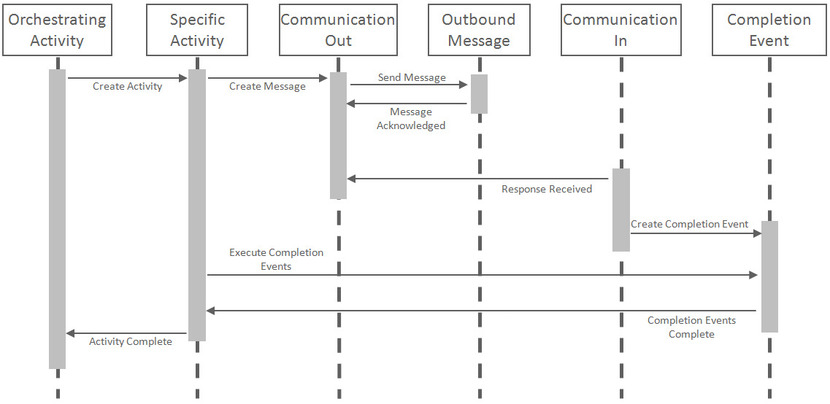Understanding Service Order Activities
This section describes service order activities and how they manage the service order process.
Service order activities coordinate a large number of child transactions that represent the communication to and from an external application. The below diagram depicts a service order activity:

Each object in the sequence diagram has a distinct set of duties within the context of the communication:
- Orchestrating Activity: controls the overall intent of the communication. For example it may "Enable Service" which would include initiating one-to-many specific activities to install the meter and begin the flow of the metered commodity to the service point.
- Specific Activity: can be initiated from an orchestrating activity or directly. These activities represent a single task to be carried out such as installing a meter or a remote disconnect smart meter command.
- Communication Out: orchestrates the communication to the external application and provides robust handling for any errors that might occur during that communication.
- Outbound Message: represents the message payload sent to the external system and the synchronous response.
- Communication In: orchestrates the handling of an asynchronous or unsolicited response from an external system.
- Completion Event: carries out the results of the communication. For example, in the case of a remote connect it would create the appropriate on off history entry for the device's installation event.
The base package provides the following types of service order activities:
- Enable Service: Used to enable service at a service point.
- Disable Service: Used to disable service at a service point.
- Cut for Non-Payment: Used to cut off service at a service point due to non-payment of past due amounts.
- Reconnect Service for Payment: Used to restore service at a service point after receipt of past due payment.
- Exchange Meter: Used to orchestrate the exchange of meters at service point, such as in the event that a customer upgrades their meter.
- Back to Back Service: Used to orchestrate a change of service when the customer at a service point changes (such as when owners/tenants change).
